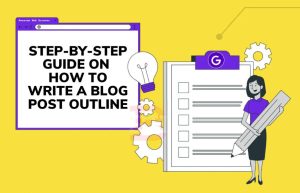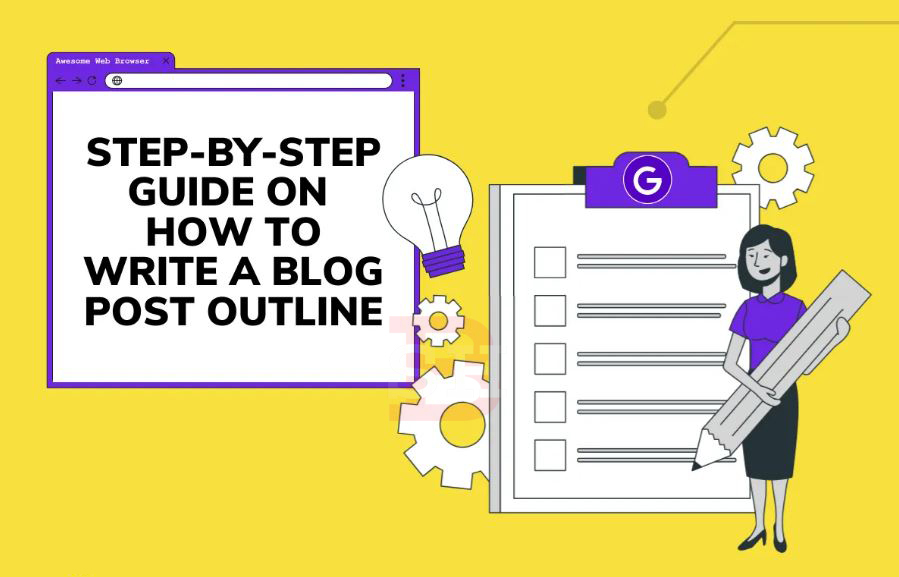 How to Write a Blog Post: Crafting the perfect blog post is an art. Learn step-by-step how to captivate your audience, optimize for search engines, and create content that shines with our comprehensive guide.
How to Write a Blog Post: Crafting the perfect blog post is an art. Learn step-by-step how to captivate your audience, optimize for search engines, and create content that shines with our comprehensive guide.
What is a blog post?
A blog post is a piece of content published on a blog, typically consisting of written text supplemented with images, videos, or other multimedia elements. It is a form of online communication where individuals or organizations share their thoughts, opinions, expertise, or experiences on a particular topic. Blog posts can cover a wide range of subjects, including personal reflections, news commentary, instructional guides, product reviews, and more.
Blog posts are commonly organized chronologically, with the most recent posts appearing at the top of the blog’s homepage. They are often categorized or tagged based on their topic or theme, making it easier for readers to navigate and find relevant content.
One of the defining characteristics of a blog post is its informal and conversational tone. Unlike traditional journalism or academic writing, blog posts are typically written in a more relaxed and accessible style, allowing bloggers to connect with their audience on a personal level.
How to write a blog post Step By Step Guide
Understand Your Audience:
Before you start writing, it’s importnt to have a clear understandng of your target audience. Who are they? What are thir intersts, prefernces, and pain points? Conducting audience research through surveys, social media insights, or analytics tools can provide valuable insights into your readers’ demographics and behavior. This information will guide your content creation process and ensure that your blog posts resonate with your audience.
Choose a Topic:
Once you’ve identified your audience, it’s time to select a topic for your blog post. Choose a subject that aligns with your audience’s interests and addresses their needs or concerns. Brainstorm ideas based on current trends, industry news, or frequently asked questions. Consider conducting keyword research to identify popular topics within your niche and optimize your blog post for search engines.
Conduct Research:
Before you start writing, gather relevant information and data to support your arguments or claims. This may involve reading articles, conducting interviews, or referencing credible sources. Take notes and organize your research materials to streamline the writing process. Remembr to fact-check your information to ensure acuracy and credibility.
Outline Your Content:
Creating an outline is a crucial step in the writing process as it helps you structure your ideas and organize your thoughts. Start by outlining the main sections of your blog post, such as the introduction, body paragraphs, and conclusion. Break down each section into subtopics or key points that you want to cover. This will serve as a roadmap for your writing and ensure that your content flows logically from start to finish.
Write a Compelling Introduction:
The introduction is your opportunity to hook readers and entice them to continue reading. Start with a catchy headline that grabs attention and succinctly summarizes the main idea of your blog post. Follow it up with a compelling opening sentence or anecdote that piques curiosity and establishes the relevance of your topic. Clearly state the purpose of your blog post and outline what readers can expect to learn or gain from reading further.
Develop Engaging Body Paragraphs:
The body of your blog post should provide valuable information, insights, or solutions to your readers’ questions or problems. Each paragraph should focus on a single idea or argumnt and be suported by evidence or examples. Use subheadings, bulet points, or numberd lists to break up the text and make it easier to read. Incorprte visuls such as images, infogrphics, or videos to enhnce the readabillity and visual appel of your content.
Optimize for SEO:
Search engine optimization (SEO) is essential for improving your blog’s visibility and attracting organic traffic. Incorporate relevant keywords throughout your blog post, including in the headline, subheadings, meta description, and body content. However, avoid keywrd stuffing, as this can negtively impact your search rankings. Write descriptive and compelling meta titles and descriptions to encourage clicks from search engine results pages.
Craft a Persuasive Conclusion:
The conclusion ties everything together and leaves readers with a lasting impression. Summarize the main points of your blog post and reiterate the key takeaways. End with a call to action (CTA) that prompts readers to engage further, whether it’s subscribing to your blog, sharing the post on social media, or leaving a comment. Make the CTA clear and compelling to encourage action.
Proofread and Edit:
Before publishing your blog post, take the time to proofread and edit it for grammar, spelling, and punctuation errors. Read through your content carefully and consider seeking feedback from peers or colleagues. Ensure that your writing is clear, concise, and free of jargon or technical language that may confuse readers. Use editing tools or software to catch any overlooked mistakes and polish your writing to perfection.
Publish and Promote:
Once you’re satisfied with your blog post, it’s time to publish it on your website or blogging platform. Optimize the formatting and layout for readability on desktop and mobile devices. Share your blog post on social media channels, email newsletters, and online communities to reach a wider audience. Engage with readers by responding to comments, answering questions, and soliciting feedback to foster a sense of community around your blog.
Conclusion:
Writing a blog post may seem like a daunting task, but by following these step-by-step guidelines, you can create compelling content that resonates with your audience and drives engagement. Remember to understand your audience, choose a relevant topic, conduct thorough research, and optimize your content for SEO. Craft a compelling introduction, develop engaging body paragraphs, and conclude with a persuasive call to action. Proofread and edit your content before publishing, and don’t forget to promote your blog post to attract readers and build your online presence. With practice and perseverance, you’ll soon become a masterful blogger capable of captivating audiences and making a meaningful impact with your writing.






Be First to Comment